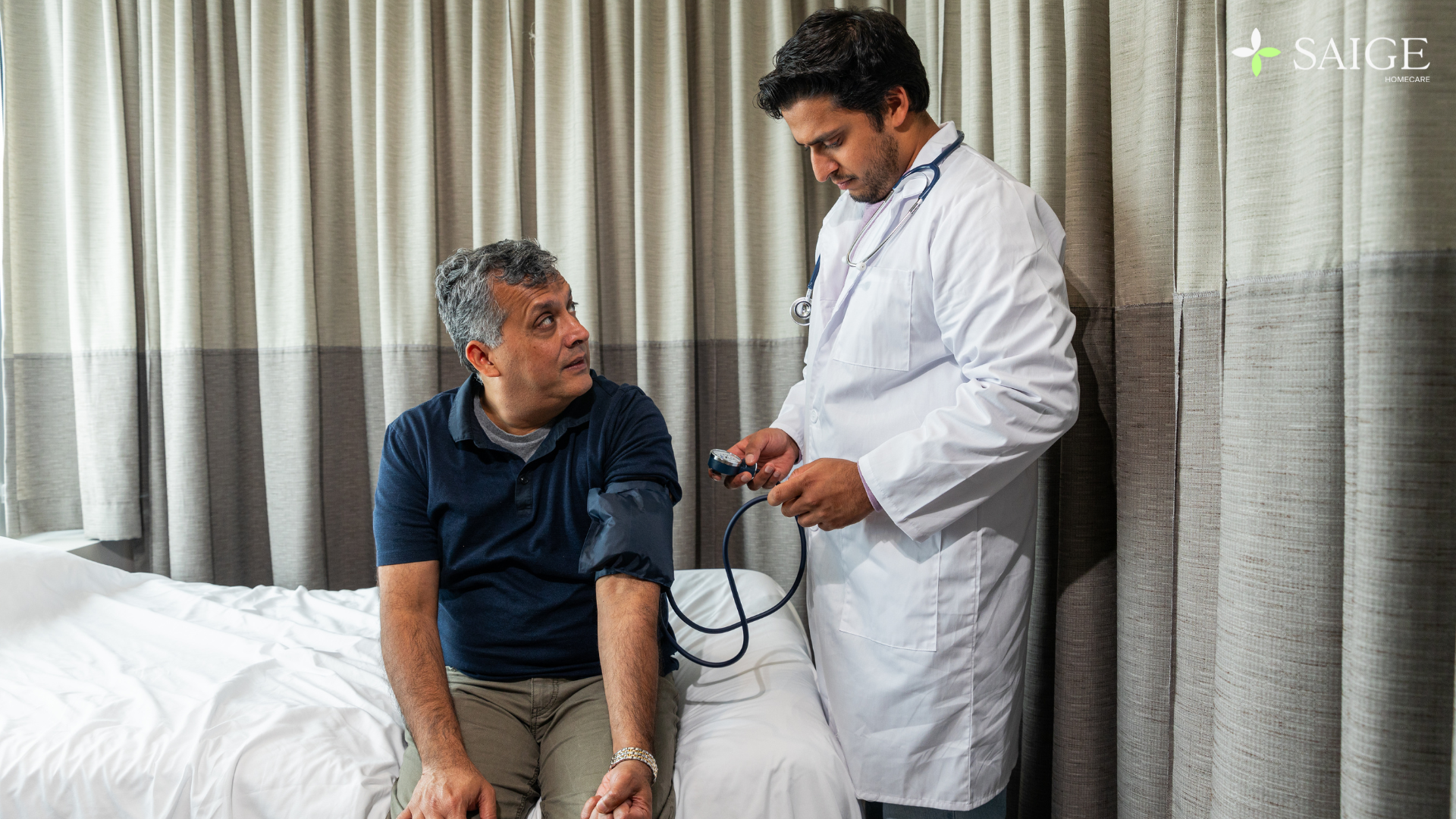The journey home after a hospital stay can feel overwhelming, especially when recovering. But with some planning and support, you can make this healthcare transition smoother. In this comprehensive guide, learn 12 key strategies to successfully manage your discharge and at-home recovery process.
1. Clarify Your Discharge Plan
Before leaving the hospital, meet with your care team to:
- Understand the next steps: Review all instructions for medications, treatments, mobility limits, diet, and follow-up appointments. Ask questions if anything needs to be clarified or concerning.
- Get direct contact information: Have phone/pager numbers for your hospital doctor, case worker, or other care providers you may need to reach after discharge.
- Confirm plan digitally: Many hospitals now input key details from your stay into online portals or apps. This gives you and your designated caregivers 24/7 access to your care plan from home.
Helpful Questions to Ask Before Discharge:
- What signs or symptoms should prompt me to call my doctor or return to the Emergency Room(ER)?
- Will I require medical equipment or IV medication administration at home?
- What type of home health services does my insurance plan cover?
- Do I need to arrange medical transportation for my follow-up visits?
2. Schedule Follow-Up Medical Care
Line up all recommended medical visits, procedures, or at-home care before leaving the hospital:
- Doctors’ visits: See your primary care doctor and medical specialists within the first 1-2 weeks at home to monitor recovery. Have these appointments booked ahead of time if possible.
- Wound care: If you had surgery or treatment requiring incision care at home, get clear instructions on changing dressings, watching for signs of infection, etc. Have properly sized bandages, antibiotic ointment, and sterile gloves.
- Infusion therapy: Those needing extended IV fluids/medications may qualify for temporary at-home infusion assistance from a visiting nurse service. Check if your insurance covers this.
- At-home nursing visits: In-home nurses can monitor wounds, administer medications, provide therapy, or draw labs. Your hospital can refer you to reputable home health agencies.
- Physical/Occupational therapy: Book initial Physical Therapy(PT) / Occupational Therapy(OT) assessments as soon as possible if recommended, as schedules fill quickly. Expect to attend multiple sessions per week.
3. Obtain Needed Medical Equipment
Work with hospital staff to rent or buy essential medical supplies before heading home:
- Mobility aids, such as walkers, canes, knee scooters, or shower seats, help prevent dangerous falls. Your PT/OT can recommend appropriate options.
- Home oxygen may be prescribed temporarily if you experience breathing issues or undergo chest surgery. Arrange portable canisters or machine rentals.
- Wound care supplies like sterile bandages, antibiotic ointment, disposable gloves, gauze, and dressing change kits. Stock up on what you need for incision care at home pet hospital guidance.
- Compression garments are often required after surgery to reduce swelling and improve healing. Have at least a few on hand.
- Daily activity helpers such as raised toilet seats, long-handled shoe horns, elastic shoelaces, leg lifters, jar openers, and extended grabber tools make tasks simpler for people with limited mobility.
4. Resolve Insurance Questions
Hospital case managers assist in confirming coverage policies for your post-discharge services:
- Check pre-authorization timelines: For home health services like nursing visits, infusion therapy, or medical transportation, submit requests to your insurance as far in advance as possible to prevent payment issues down the line.
- Clarify durable medical equipment coverage: If your plan has special distributors to obtain canes, walkers, oxygen tanks, or other doctor-prescribed equipment, get the details before discharge.
- Discuss discharge location with your case manager: Your insurer may require you to prove adequate at-home support or otherwise recommend transfer to a rehab facility or skilled nursing home for part of your recovery.
5. Arrange Transport Assistance
If you are unable to drive after hospitalization, set up medical transport or designate driving support people:
- Schedule non-emergency medical transportation (NEMT): Medicaid & some private insurance plans cover transport to medical appointments by van or car service following hospital stays if pre-arranged.
- Recruit family & friends: Create a shared document where volunteers can sign up to drive you to periodic medical appointments or errands. Services like Lotsa Helping Hands let you coordinate requests easily.
- Order medications for delivery: Avoid trips to the pharmacy by signing up for mail-order medication delivery with your health insurance provider or low-cost programs.
6. Designate a Caregiver
| Category | Without Home Care Services | With Home Care Services |
| Care Coordination | Self-coordinate follow-up medical appointments. Track health paperwork/instructions independently. | Assistance scheduling appointments. Use online portals for care team communication. |
| Medications | Self-administer all medications. Personally manage prescription refills. | Aides can remind and organize meds. Nurses can inject medications. |
| Meals & Nutrition | Independently prepare all meals. Get your groceries if you are able. | Caregivers provide meal prep. Meal delivery coordination. |
| Mobility Assistance | Struggle with self-care/daily tasks alone. Limited safety oversight. | Aides assist with dressing and bathing. Escort to prevent falls. |
| Transportation | Arrange your own rides to medical appointments. | Scheduled medical transport with assistance. |
| Emotional Support | Recover in isolation. Personally manage anxieties. | Companionship services. Counseling referrals. |
| Household Upkeep | Tackle chores/maintenance alone. | Cleaning and laundry services. Caregivers can bring in mail, etc. |
Select one central family member or friend to oversee your care regimen when you get home. Alternatively, Collaborate with a professional home health agency such as Saige Care to provide or supplement caregiver support:
- Medication administration: They can organize pills into daily boxes, prompt you when it’s time to take them, call doctors for refills, and monitor for any reactions. Saige Care’s qualified nursing aides can also assist with medication management per doctor’s orders.
- Post-hospital instructions: Have them attend discharge meetings with hospital staff and help manage any confusing health details afterward. Saige Care has experience guiding patients through post-discharge protocols and answering questions.
- Safety & symptom monitoring: They can watch for signs of new/worsening symptoms and contact your medical providers with concerns. Saige Care’s skilled caregivers continually assess patients and promptly notify healthcare teams when issues arise.
- Emotional support: Saige Care’s compassionate aides provide comfort through friendly conversation and companionship services.
7. Prep Your Home Environment
Before you leave the hospital, assess and adapt your home space to make it safer:
- Reduce fall hazards: Secure loose rugs, install grab bars in bathrooms, add railings on both sides of stairs, and ensure good lighting in walkways.
- Create easy access: Keep frequently used items in easy-to-reach locations to avoid straining sore incisions.
- Obtain mobility equipment: Use raised toilet seats, shower seats, reaching devices, and other aids recommended by the hospital therapy team.
- Set up a main-floor recovery area: Consider temporarily moving a bed to a first-level living space so you avoid using stairs early in recovery.
Home Modification Checklist
- Secure Loose Rugs
- Install Grab Bars
- Improve Lighting
- Create Accessible Storage
- Buy Mobility Aids
- Set Up the Main Floor Recovery Area
8. Use an Online Care Calendar
Web-based care coordination calendars let you easily request help from family/friends after discharge:
- Request rides: If you have follow-up medical appointments but can’t drive, assign someone to provide transportation via your online calendar.
- Ask for meals: When you don’t feel up to cooking, tap your support network to drop off nutritious dishes or groceries.
- Delegate household tasks: From pet care to yardwork, list out needs to prevent household obligations from falling solely on you.
9. Stock Your Fridge & Freezer
Prep healthy, easy-to-reheat meals you can rely on when not feeling up to cooking elaborate dishes during early recovery:
- Make double batches when cooking pre-surgery, such as soups, stews, and casseroles, then freeze half for later.
- Prep and freeze simple foods like fresh-cut fruits, boiled eggs, yogurt cups, and nutritious smoothies into individual portions.
- Ask the family to cook dishes that can be frozen or refrigerated upon discharge. Assign someone to coordinate meal drop-offs.
- Order nutritious frozen meals from companies that offer diet-specific options delivered to your door.
- Stock pantry staples – whole grains, protein bars, bone broths, and nut butter make preparing balanced snacks/mini-meals easier.
10. Create Handy Checklists & Guides
Stay organized by compiling key medical and appointment details in one spot:
- Medication chart: Write down dosages, frequency, side effects, and prescribing doctor contacts for all medicines.
- Home health binder: Collect discharge paperwork, at-home care instructions, business cards, and contact info for visiting nurses, therapists, or aides assisting you. Refer to it.
- Questions notebook: Jot down questions about diet, medications, symptoms, activity clearance, etc., to review at follow-up doctor visits. Use it to call providers if issues arise.
- Appointment calendar: Record all medical appointments and remind yourself to request interpreter services in advance if needed.
11. Request a Safety Visit
Some local fire departments provide free home safety visits after major health events:
- Certified safety technicians tour your home to assess trip risks, install smoke detectors, replace batteries in existing detectors, and handle any minor safety repairs observed, like fixing cracked flooring.
- The visits are completely voluntary but recommended for at-risk seniors recovering from surgery/injury, those with new mobility limitations, or discharged patients still coping with fatigue and weakness.
Contact your local firehouse or emergency services department to ask if they offer such a program. If not, discuss any pressing safety concerns with your visiting home health nurse or case manager.
12. Set Up an Emotional Support System
Recovery can feel draining and isolating. Having regular social connections aids healing:
- Identify your support network, such as family or friends, faith community members, and trusted neighbors with whom you feel comfortable regularly reaching out for company.
- Connect with a visitor volunteer program through community services that offer friendly check-ins.
- Join an online support community to exchange advice, tips, and encouragement with other patients recovering from similar procedures.
Additional Ways to Prevent Emotional Struggles:
- Attend local senior center events when you regain strength.
- Adopt a dog or cat to have a comforting companion at home.
- Consider short-term counseling if mood issues persist.
Frequently Asked Questions
1. How much activity can be performed at home while recovering?
Begin slowly, pay attention to the body’s signals, and take regular breaks. Gradually increase activity over days and weeks with guidance from a doctor. Avoid engaging in anything excessively painful.
2. When is emergency care necessary after returning home?
If you experience difficulty breathing, chest pain, uncontrolled bleeding, or other worrisome or worsening symptoms, contact emergency services or visit the ER.
3. How do you manage fatigue or tiredness post-hospitalization?
Anticipate that complete recovery may take weeks or months. Prioritize rest, proper nutrition, and avoiding excessive exertion. Incorporate naps and sufficient sleep into the routine. The recovery timeline varies for each patient based on health status, diagnosis, and treatment plan. Consult with a doctor to determine a suitable pace for your specific situation. Avoid prematurely resuming activity before readiness.
Conclusion
The discharge transition can feel daunting. Give yourself grace if things feel emotionally or physically harder than expected as you regain independence back home. With the practical strategies above and support from doctors, caregivers, and your community, you’ll smoothly adapt to being home while continuing your recovery journey.


